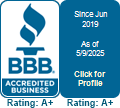If you suspect for any reason that the building you’re working in is in risk of violating the FDNY fire code, it’s important not to wait for a resolution! We always say that it’s better to be safe-than-sorry, and in this case, fire safety is one of our number one priorities.
Common FDNY Violations
In order to avoid receiving a violation, it’s very important that you continue to make sure you schedule regular inspections for your fire sprinkler system. Allstate Sprinkler Corp. helps with all fire sprinkler testing and inspection needs. Some of the most common violations you should be aware of are:
- VC1- Fire Extinguishers
- VC5- Inspection Record Keeping
- VC6- Signs
- VC7- Color Coding
- VC12- General Maintenance (Spare Heads etc.)
- VC17- Certificate of Fitness
- VC20- 5-year testing
What can Allstate do to help you resolve your FDNY building violation?
- All of the necessary paperwork
- Any scheduling issues
- Your fire sprinkler testing
- Any and all of your fire sprinkler repairs
Allstate Sprinkler Corp. can and will with you in order to assist you with all of the above in order to satisfy the conditions of your building violations.
Fire safety is an important building topic throughout the year. While death and injury are the greatest risks by fire, a building fire also destroys jobs. In fact, many of the buildings that are destroyed by a fire are never rebuilt.
Here are just a few important tips about fire safety in order to create a safer working environment with your employees:
- Keep your building clean and organized: Make sure to keep the workplace nice and organized. Clutter can contribute to a fire by providing fuel, preventing access to any exits and emergency equipment.
- Dispose of all trash properly: Make sure to place any oiled rags in a covered metal container. This waste must be disposed on a regular basis.
- Make sure to handle any and all machinery properly: Maintain machinery in order to prevent any overheating and friction sparks.
- Report any and all of your buildings electrical hazards: Many fires start with faulty wiring and the malfunctioning of electrical equipment. NEVER attempt any electrical repairs unless you’re required to do so.
- Maintain free access to all electrical control panels: Any material or equipment stored in front of the building control panels would slow down the shutting down of power in an emergency situation.
- Use and store chemicals safely: Carefully read the label and the Material Safety Data Sheet to determine flammability and other fire hazards. Provide adequate ventilation when using and storing these substances.
- Take the proper precautions while handling the use of chemicals: Use all precautions to prevent ignition in potentially explosive atmospheres, such as those containing flammable liquid vapors or fine particles. Use non-sparking tools, and control static electricity as required.
- Help maintain building security to prevent arson fires: Lock up as instructed; report suspicious persons; and don’t leave combustible rubbish where it can be set afire outside the building.
- Do not smoke in “No Smoking” areas: Smoke only in designated areas, and extinguish smoking materials safely. Never smoke in storerooms or chemical storage areas.
- Be aware of your surroundings: Never block sprinklers, firefighting equipment or emergency exits. Observe clearances when stacking materials.
- Make sure you know all of your emergency contacts: Post emergency telephone numbers as well as the company address by the telephone in your station for quick access if a fire were to start in your work area.
- Learn how to properly use a fire extinguisher.
In case of an emergency, remember to follow your building Emergency Action Plan (EAP), and call for help immediately.
Don’t let a fire threaten you, your co-workers and your job. Work safely to prevent fires, and know what to do if one occurs.


Leave a Reply
Want to join the discussion?Feel free to contribute!